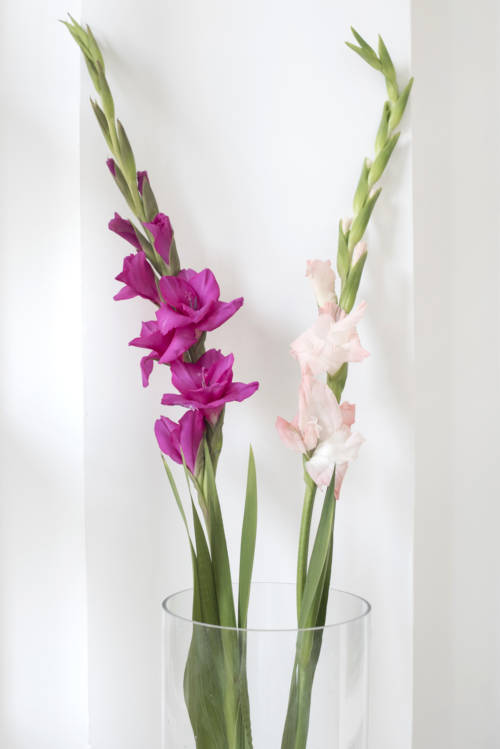
Ask Ella: How Gladiolus Takes Bouquets To The Next Level
Ask Ella is a recurring Garden Collage feature where we ask our in-house florist, Ella Stavonsky, about floral design– including the history of, origin, and maintenance that goes into some of the most intriguing flowers on the market today. This column is dedicated exclusively to common and rare varieties of flowers you’re likely to find at your local market. This week, we spotlight gladiolus, an affordable, shockingly-tall flower with blooms for days.
***
With its regal, impressive height, gladiolus is not a flower easily mistaken for another. Though its name derives from the Latin gladius, meaning “sword” (it is sometimes thrillingly called the “sword lily”), gladiolus is native to Asia and Africa. The Central and South African species are specifically credited as the source of the unimaginably vast number of colors. In addition to solid colors, gladiolus’ papery petals are often ombréed or have color only around the edges. Though they were once used for their medicinal properties (in some parts of the world, portions of the plant are still eaten), the gladiolus serves almost an exclusively decorative purpose today.
Before placing gladiolus in cold water, be sure to strip off the lower leaves of the stem (pictured above). Because gladiolus tends to bloom in succession from the bottom up, you’ll need to gently remove the blooms that wilt at the base as the upper buds begin to fully blossom.
We love gladiolus by themselves, but they also blend surprisingly well into different styles; we’ve mixed them into tropical and country bouquets alike, without anything looking remiss. While their height can be somewhat intimidating (we’re really not exaggerating, they’re one of the tallest flowers we work with!), don’t be afraid to add them to shorter bouquets— a single stem adds a refreshing point of intrigue to any arrangement.


































